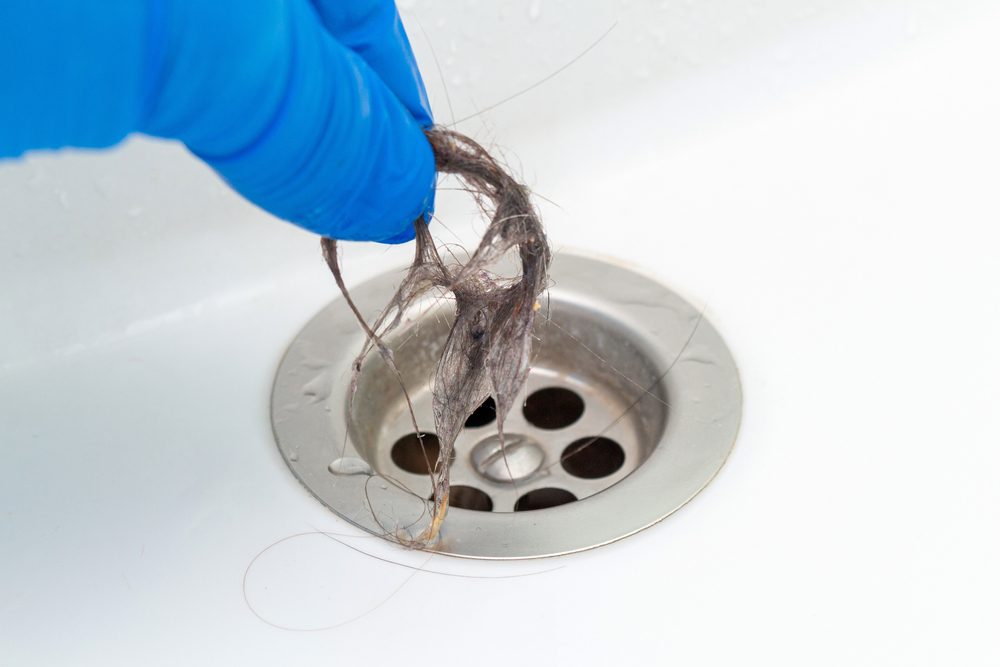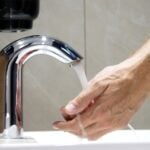
The Causes of Drain Clogs (And What You Can Do About Them)
- By: Amer ZaghloulehUncategorizedComment: 0
Any plumbing problem can disrupt your daily routine. Drain clogs might be the biggest pain in the neck. Left unchecked, they can distribute foul smells throughout your house and increase the risk of health issues.
Knowing the causes of drain clogs is key to preventing them. This article will list the most common culprits and tell you how to prevent drain clogs.
Most Likely Clogged Drains Causes
Your drain becomes clogged due to the accumulation of various objects and other factors.
Soap
Soap scum accumulates over time in the bathroom, laundry, and shower drains. It can make your drain stuck, as it reduces the diameter of the lines and causes backups. Plus, it can mingle with dirt to make the blockage even more severe.
Dirt
Few people pay attention to how much dirt they throw down the drain. Most homeowners don’t even think about how much dirt they’re dumping.
Excessive amounts of dirt are among the most frequent causes of clogged drains, which is why you should avoid bombarding your system with grit and grime.
Hair
Hair, animal fur, dental floss, and other stringy substances are the main reason your drain might be clogged. They usually end up in the plumbing system in the shower, bathroom drains, bathtub, and laundry room.
Hair can also be the most difficult problem to resolve because it knots up. It combines with soap, grease, and other substances, which attach to various parts of your plumbing fixtures. If the buildup gets out of control, clogged drains are inevitable.

Grease, Fat, and Oil
You shouldn’t pour bacon grease or other oily substances down your garbage disposal or drain. It might seem harmless because it’s a liquid, but it can wreak havoc on your plumbing system once it cools and solidifies. It can easily cause drain clogs, regardless of the type of fat.
- Steak trimmings
- Vegetable oil
- Chocolate
- Cream
- Butter
Water can wash away many things as it flows through pipes, but not fats. These binding substances cling to the drains and lead to blockage.
Knowing how to keep drain pipes clean is essential for preventing clogs. One of the things to do is dump fat into the trash can. Oils, fats, and bacon grease should be left to cool and congeal or solidify, allowing for simple cleanup.
Alternatively, pour the substances into a disposable container or empty can before placing them in your trash can. This will help keep your drains in great shape.
Food Waste
Food waste is a major problem in the kitchen, especially coffee grounds. Clean drains can only process so much before they get clogged. Rather than breaking down, coffee grounds clump together and form large masses that keep your plumbing system from working correctly.
Don’t dump food down your garbage disposal or kitchen sink. Throwing it away in your compost or garbage can is a much better idea.
If you want to make your system even more resistant to clogs, avoid putting cooked food into your sewer pipe. Pasta, meat leftovers, and steamed vegetables are notoriously hard to remove. They stick to the inside of your pipes and can form large obstructions.
Too Much Paper
Used moderately, toilet paper rarely causes drain clogs. If you put too much down your drain, you may need to hire a clogged drain repair professional to remove the obstruction. Quilted paper is particularly troublesome because it’s thicker than standard models.
Diapers and Wipes
You should only flush human waste and toilet paper down your toilet. Diapers and wipes are bulky and can easily result in blockage, no matter what the packaging says.
Feminine Products
Here’s a tip if you want to know how to keep drain pipes clean – don’t flush feminine products down the drain. They can block the system and typically require expensive repairs to address.
Tampons might be the biggest problem since they grow after absorbing fluids. Cotton swabs are also a threat because they don’t dissolve or break down. Instead, they pile in your drains and cause clogs.
Solid Items
You know better than to dump your children’s toys down the drain. However, your kids might be curious and decide to see what happens when they flush their toy truck down your toilet. Other items can also end up in the system by accident. This especially happens if you don’t have a guard or other installations protecting the opening.
Either way, solid objects are almost guaranteed to clog your drains.
Cat Litter
Cat litter and drainage systems don’t mesh. Featuring sand, silica, and clay, this substance absorbs water and creates clumps. This can lead to a large blockage inside the lines. Even if it’s purported to be “flushable.”
Leaves and Plants
Clogs don’t just affect interior drains. They can happen to your exterior drains too.
For instance, you can encounter drain clogs if your outside elements get blocked by leaves and plants. They can enter your system and lead to issues, especially during fall.
Mineral Accumulation
If you have hard water, you have a greater risk of clogged drains. The mineral deposits linger in your system, reducing flow and causing a backup.
Leaks
Leakage is the archenemy of main and sewer drains. If moisture leaks out underground, the surrounding ground is soaked and erodes. This enables the line to change position by sagging or dropping. The water alters the soil’s chemical composition, which can make the line break. In this case, a drain clog is the least of your concerns.
Slope
The slope of your water and sewer lines must be appropriate. Otherwise, you can expect blockage and other drainage issues.
In general, your drainage pipe should be pitched at least 0.25 inches per foot. You may even need more, depending on your household demand or terrain. An experienced plumber can tell you how much slope your home needs to process waste and water effectively.
Tree Roots
Another common cause of drain clogs is tree roots. They typically affect the main sewer and water lines, hindering optimal water flow. While they generally invade older houses, they can also make their way to modern properties. One of the first signs of root invasion is gurgling sounds from your system, so be on the lookout for this when troubleshooting.
You’d hardly associate tree roots with clogged drains and other plumbing scenarios, but the reason they cause these issues is simple. As living beings, they look for moisture, so they’re naturally attracted to the water in your sewer pipes. If your line has a crack, the limbs can enter the system effortlessly.
The same goes for households in wooded areas. They’re surrounded by a larger number of trees, increasing the risk of root invasion.
The most effective way to prevent tree roots from compromising your drains is to schedule a video inspection. Experts can examine your pipes once every couple of years to safeguard against considerable harm. You’ll need to pay for this service, but the cost pales in comparison to the price of addressing more severe problems.
Pipe Scale
Scale is a substance that forms when water passes through your pipes. It interacts with the lines and can accumulate so much that it creates a blockage or clogs. The deposits generally result from dissolved magnesium and calcium.
The particles are temperature-sensitive. They react to different conditions, which is why they tend to move around the pipes. Hence, the scale can collect in multiple spots and attract more materials until it becomes an obstruction.
Besides affecting your drains, it can also compromise water-using appliances, like your dish and clothes washer.
Disintegration
Pipes can disintegrate over time, particularly in older houses or homes with aging clay, concrete, and terra cotta lines. Joints deteriorate and come apart, making the system sag. This promotes an inefficient plumbing system that’s more susceptible to clogging.
It gets even worse if you live in a cold region. Water freezes in the winter, and the continuous pressure of the freeze-thaw process puts lines under immense stress. Liquid can’t flow properly in this environment, which raises the chances of drain clogs.
Offset Pipes
The ground surrounding your pipes shifts and settles. Older models made of clay and concrete and in three-foot sections can get displaced. The soil pushes them upward, affecting water flow from the local sewer system. In turn, many substances linger inside the system and form drain clogs.
Undersized Pipes
You might know how to prevent shower drain clogs, but this won’t help if your lines are undersized. Sometimes, previous owners may have added rooms or entire buildings on top of a single plumbing system without compensating for the extra weight. Likewise, inexperienced or unlicensed technicians may have mounted fixtures incorrectly due to miscalculations of the load. This makes the pipes more prone to cracks, leaks, and other issues that lead to clogged drains.

Overload
Even if your sewer pipes are appropriately sized, this doesn’t eliminate the possibility of overloads. For example, the waste needs of your house may have grown, and your septic system might not be able to handle the additional load. This reflects on your drain, indicated by backups or bad smells.
Preemptive Measures: How to Prevent Grease Clogs and How to Prevent Bathroom Sink From Clogging
Knowing the causes of clogged drains is useful, but it’s merely a starting point. You need to understand how to prevent sink clogs and other types of blockages to keep your system in mint condition.
Hiring professionals to inspect and maintain the pipes regularly is your best option, but you should also adopt sound plumbing practices.
Keep Coffee Grounds, Grease, and Food Waste out of Your Kitchen Drains
These substances should go to your compost heap or trash can. Roses and blueberry bushes love a good coffee grounds mulch. Pour grease into sealable containers, wait for it to cool, and place it in the trash. Some municipalities even have recycling centers for household grease. Food waste should be tossed, not put down the garbage disposal.
If you’ve ever wondered, can you pour boiling water down kitchen sink? Stop wondering. Boiling water can melt PVC lines and seals. Stick to safer alternatives.
Don’t Put Soap Scum and Hair Into Bathroom Drains
Cover your shower and tub drains with a hair catcher or mesh screen to collect harmful substances and improve water drainage.
Replace Your Tub or Shower Stopper With a Model That Features a Built-In Screen
Instead of standard shower stoppers, consider installing a product with a built-in screen. This way, you’ll revamp the system while reducing the chances of drain clogs.
Don’t Flush Everything Down Your Toilet
As previously discussed, the toilet is only designed to accept toilet paper and human waste. Bulky, stringy, and dense materials can cause clogs.
Brush Hair Before Taking a Shower or Bath
Brush your hair before you take a shower or bath. This helps you get rid of loose hair and keeps it from clogging your shower drain.
If you’re bathing your pet in the shower or tub, put a washcloth over your drain. The amount they shed can prove too much, even for the most advanced hair catcher.
Throw Feminine Hygiene Products and Dental Floss Directly Into the Trash
Tampons and other feminine hygiene products are bulky and expand when they come into contact with moisture. Keep them away from the toilet and drains to prevent clogs.
Clean Drains Weekly With Your Pop-Up Stopper
Use a pop-up stopper to remove debris, rinsing the object after every clearing of hair and other pre-clog material. You can also extract debris and hair with a hair-catching brush or bent wire known as a drain snake.
Flush Drains Once per Week
You can do this by filling the shower or tub with hot (not boiling) water and draining it. Remember to run some hot water down the drain after every shower.
Maintain Drains With a Bacterial Cleaner Once per Month
Unlike chemical-based products, bacterial cleaners are non-corrosive and biodegradable, making them safe for your pipes.
Deep Clean the Tub Monthly
Deep cleaning your bathroom is one of the best ways to prevent drain clogs. One of the items you should pay special attention to is the bathtub.
Remove your overflow plate before raising the pop-up assembly. This lets you reach the rocker or spring arm, enabling you to remove debris or hair. Once you’ve scoured the area, rinse your pop-up assembly and reinstall it.
No More Drain Clogs
Using your drains carefully dramatically decreases the chances of clogs. However, you should also contact licensed plumbers to inspect the system regularly.
That’s where Anytime Plumbing comes in. Our trained specialists have vast experience in removing drain clogs and other difficulties before they become major issues. Get in touch with us today to learn more about our approach.







